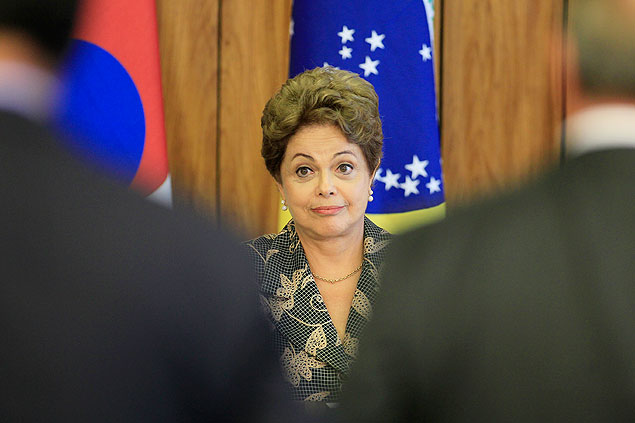Latest Photo Galleries
Brazilian Markets
13h17 Bovespa |
+0,69% | 125.057 |
16h43 Gold |
0,00% | 117 |
13h23 Dollar |
-0,73% | 5,2119 |
16h30 Euro |
+0,49% | 2,65250 |
ADVERTISING
Mega Railway Linking the Atlantic and Pacific Oceans Enters Rousseff's Plans
05/12/2015 - 08h59
Advertising
NATUZA NERY
DIMMI AMORA
FROM BRASÍLIA
China, Brazil and Peru are preparing a preliminary agreement to build a mega railway that would link the South American countries, creating a corridor of rails between the Atlantic and the Pacific. The work is estimated at US$ 9.8 billion (R$ 30 billion).
Folha learned that the Brazilian government will include transoceanic railroad stretches in the investment plan that President Dilma Rousseff will announce in June. Next week, Chinese Prime Minister Li Kegiang will arrive in Brasília to finalize partnerships with the Presidential Palace.
The idea is that companies from the Asian country will participate in future auctions in order to purchase some of the package's stretches.
Ministers and technicians from the Esplanade confirmed that negotiations are in the advanced stages for the Campinorte stretch, which links Goiás to Lucas do Rio Verde (MT), the Brazilian agribusiness belt, through which most of the country's grain production passes.
In the original design, the Transoceanic starts in Rio de Janeiro and goes through Minas Gerais, Goiás, Mato Grosso, Rondonia and Acre, and from there goes to Peru.
The construction of a project that would change the map of the international logistics system will run into big problems for the high cost of construction to cut through the Andes.
Those who are already enthusiastic about the project, including President Dilma Rousseff, argue that the stretch between the two countries will clear the way for Brazilian products by way of the Pacific, making them more competitive.
Brazilian soybeans, for example, have two paths to China: the ports in Santos (SP) and Belém (PA). With the first, it is a 30-day trip across the Atlantic. With the second, leaving Belém and traveling via the Panamá Canal, it's 35 days.
A trip from Peru to China takes a similar amount of time. The biggest difference is the time between the producing region, Mato Grosso, and the port.
China depends on Brazilian agriculture products, but wants an alternative to the Panamá Canal, under US influence.
Translated by JILL LANGLOIS
Read the article in the original language
| Beto Barata - 24.abr.2015/Folhapress | ||
 |
||
| The Brazilian government will include transoceanic railroad stretches in the investment plan that Rousseff will announce in June |



